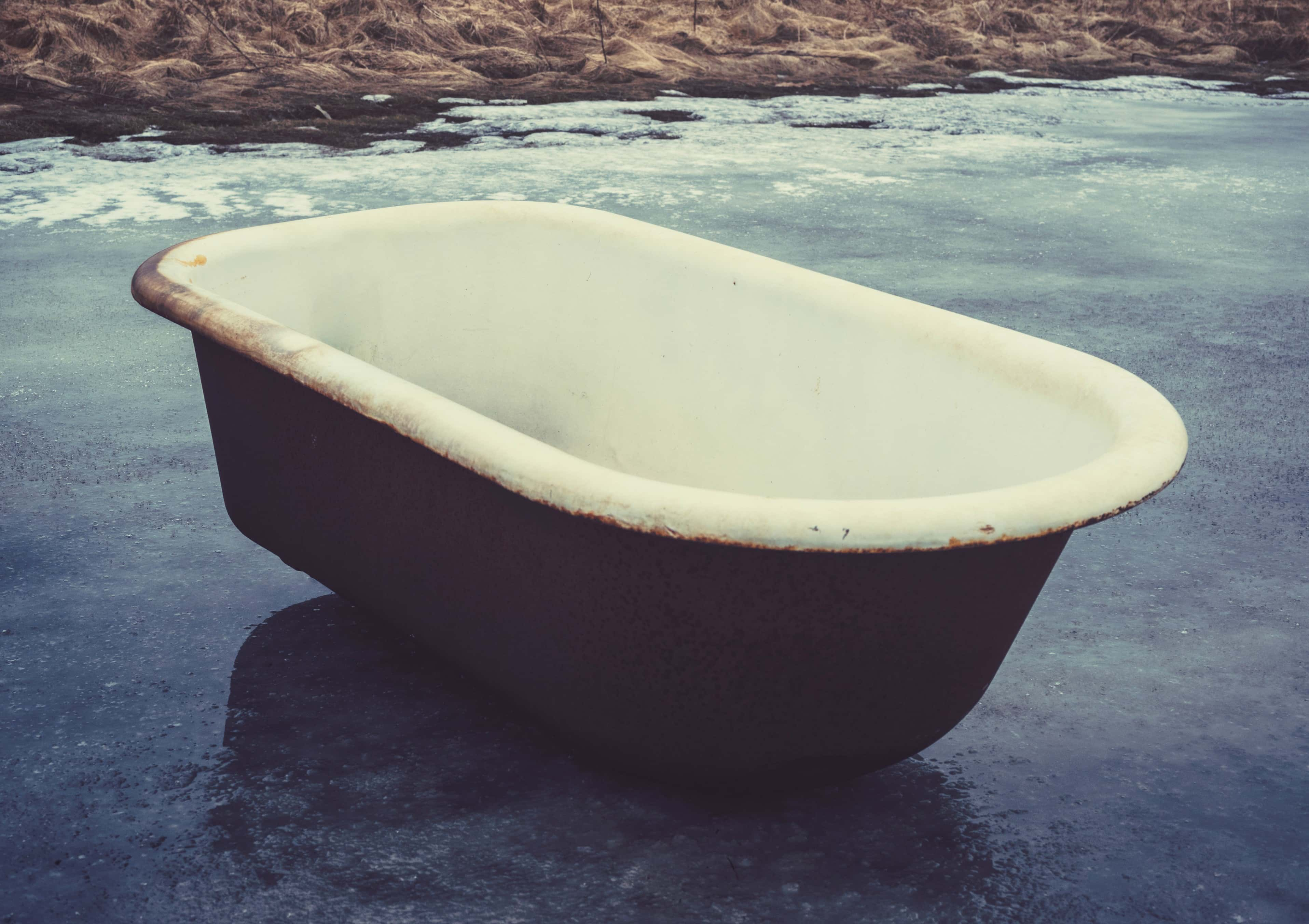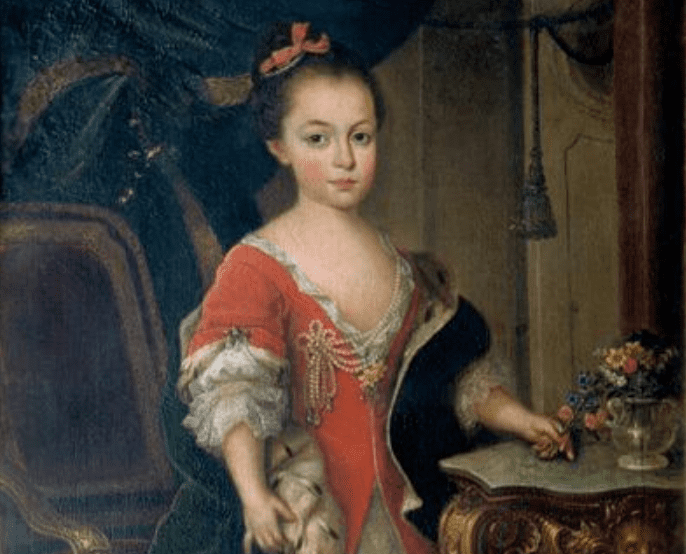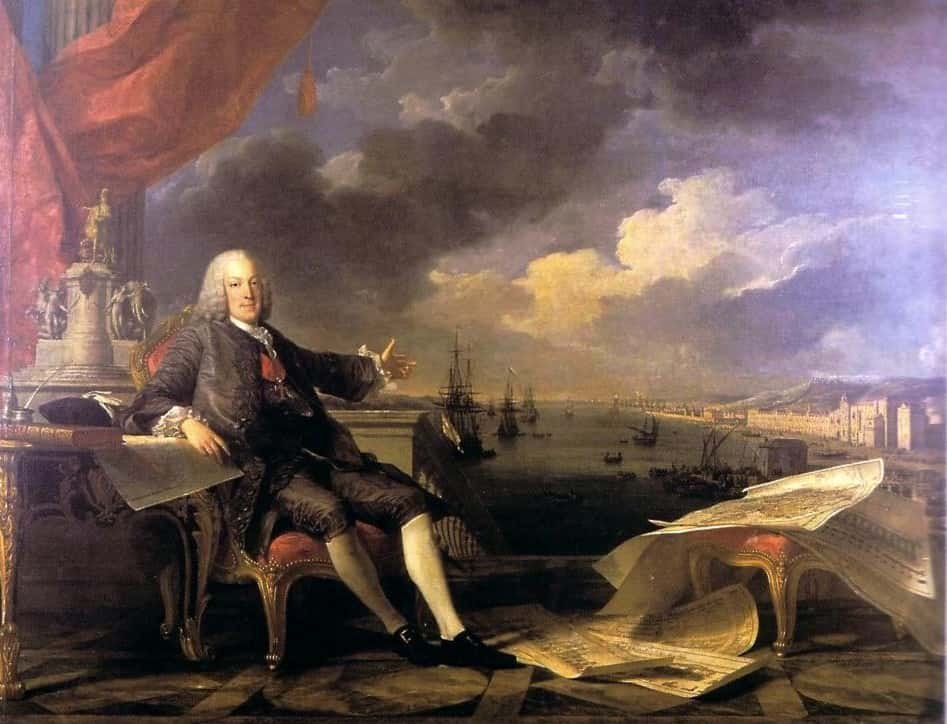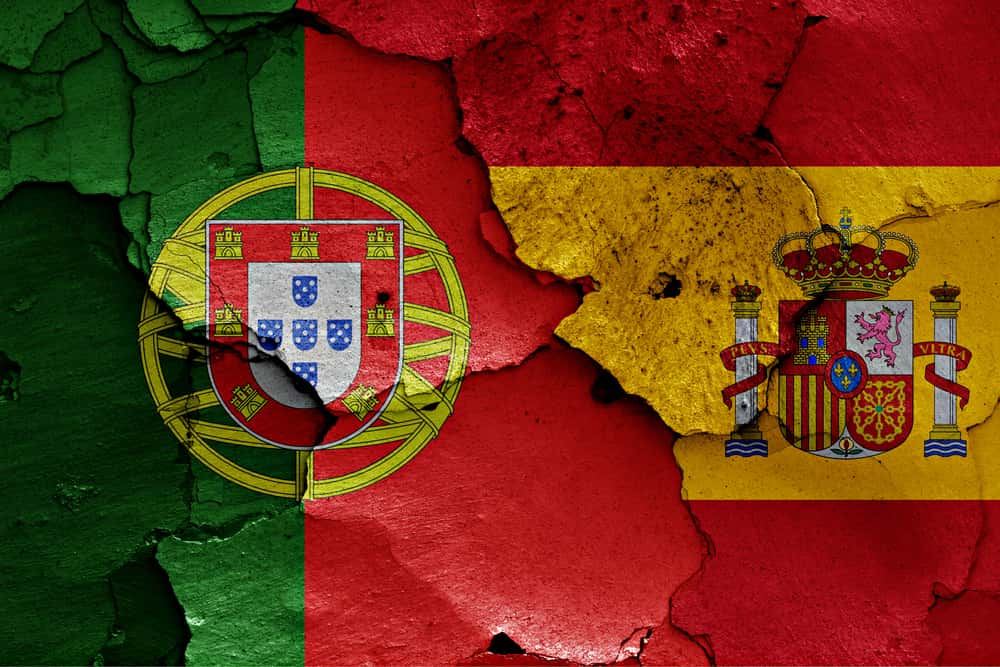Portugal’s Mad Queen
Queen Maria I was Queen of Portugal from 1777 until her death in 1816. While she has gone down in history for her political achievements (she was the first undisputed Queen Regent of Portugal and the first monarch of Brazil), her life contained great darkness. Battling mental illness and truly horrific personal losses, Queen Maria I still strove to be a good ruler. As she slowly lost her mind, Queen Maria became known as Maria the Mad—but this queen’s life was far darker than people know.

1. She Had A Split Personality
Queen Maria I of Portugal was known by two different titles: Maria the Pious, and Maria the Mad. Her reign started out pretty smoothly, and the people considered her to be a good ruler—that is, until she became delirious a decade into her reign in 1786. As we'll see, Maria suffered a number of devastating losses that year. It's no wonder that she was nearly driven insane.

2. She Felt She Was Damned
When Maria became delirious, she started ranting and raving, screaming and crying, and was positive that she was damned. As part of an attempt to cure her of her madness, she was unwillingly subjected to treatments such as bloodletting and enemas. Yeah, like that will stop the shrieking.
3. She Was Declared Insane
Dr. Francis Willis, the physician of King George III—yes, another mad monarch—was called in to examine Maria, and not surprisingly, he declared her insane. If you thought bloodletting and enemas were nasty, this guy’s treatments made them look like nothing more than taking an Aspirin. He tried straight jacketing, blistering, and ice baths, none of which were terribly pleasant or helpful.
4. Her Mother Was A Spanish Princess
Maria’s mother Mariana was a Spanish princess by birth, and later became Queen of Portugal with her marriage to King Joseph I. At seven years old, she was engaged to her first cousin, the 10-year-old Louis XV of France. Even worse, the young girl had to go live at the French Royal Palace until the juvenile fiancés were old enough to marry. Mariana couldn't have known how much worse things were going to get.
5. She Got Rejected
Unfortunately for Mariana, the Prime Minister Louis Henri, Duke of Bourbon, had other plans for the young Dauphin. He schemed to make sure that he'd keep his influence over the future king. To stay in the king's special friends club, he offered up his own sister to Louis XV as a wife. She was quite a bit older than the Dauphin and, though being able to bear children should have been a plus, the young royal didn't seem too interested. Louis XV ended up marrying a Polish noblewoman. Ironically, she had almost no political connections.
6. She Was Next In Line
Prior to her birth, Maria’s parents didn't have the best luck with producing living children. All of her brothers were stillborn, which made Maria second in line for the throne behind her father Joseph. She also had three living younger sisters, one of whom repeated her mother's dark history. Just like Mariana almost married Louis XV, one of her daughter's was almost the bride to Louis XV's son, the Dauphin of France.
7. The Title Of Princess Of Beira
The title Princess of Beira, which would one day be held by Maria I, was originally created by King John IV of Portugal to be bestowed upon the eldest daughter of the reigning monarch. It had no direct connection to the heir until one fateful day: Isabel Luísa’s birth in 1699. Isabel Luisa was not only the eldest daughter of the king but the heiress presumptive.
8. New Traditions
When King John V named his eldest granddaughter Maria Francisca (the eventual Queen Maria I) Princess of Beira, it was the first time that the title had been given to someone two generations removed from the monarch. King John just loved creating new traditions. He also named her eldest son the Prince of Beria, marking the first time that a boy held the title.
9. Heir Presumptive
At age 16, Maria’s father Joseph officially ascended to the throne, and Maria became the heir presumptive. This basically just left her in a holding pattern until her parents died for an utterly unfair reason. Unlike the heir apparent, who is the firm and definitive first in line to the throne, she could be displaced by the birth of a male child.
Ironically, Queen Elizabeth II of England was the heir presumptive until the day before her ascension, despite her father being on his deathbed and her mother being well past child-bearing age.
10. Traditional Titles
Becoming Heir Presumptive also came with a couple of new titles for Princess Maria. She was named Princess of Brazil and Duchess of Braganza, which were traditionally bestowed on the heir apparent of the throne.
11. King’s Claustrophobia
The Lisbon earthquake of 1755 was one of the deadliest earthquakes in history, nearly destroying Lisbon and the surrounding areas. Though the Royal family had thankfully been away from the city at the time, after the quake, King Joseph developed a severe case of claustrophobia and was never again comfortable living within walls.
It was only after his passing that Maria began building a royal palace.
12. Stick to Your Own Kind
If Maria had any desire to be queen—which presumably she did—Portuguese law forbade her from marrying a foreign prince. It stated that, “If the King’s daughter marries a foreign prince or noble, she shall not be recognized as queen.” That definitely limited Maria's choices.
13. Unsuitable Match
In not being allowed to marry a foreigner, Maria faced a serious lack of suitable options for marriage. The only Portuguese man outside of the family who was high enough rank to marry her was the Duke of Bragança. While Maria might have been just fine with it, her family deemed him unsuitable for fear that the male Bragancas might try to make a play for the throne. Well, isn’t that a conundrum.
14. In Her Honor
Despite her madness, Queen Maria is still highly revered in both Brazil and Portugal. A large statue of her stands outside of the Quelez Palace in Portugal and a pousada (guest house) near the palace is named in her honor. There is also a marble statue of the queen outside of the Portuguese National Library in Lisbon, which was erected by students of the great Portuguese sculptor Joaquim Machado de Castro.
15. Co-Ruler
As soon as Maria ascended the throne, her husband (and uncle...yup) Pedro became King of Consort of Portugal and co-ruler (in name only) until his passing in 1786. Luckily for Maria, her hubby wasn’t at all interested in government business and devoted all of his time to hunting and religion. Men will be boys, I guess.
16. By Right of His Wife
As King Consort, Pedro had no claim to the throne if Maria pre-deceased him. If she perished first, the crown would pass to her descendants, and his reign would end. As it happened, he kicked the bucket first, so the issue never came up.
17. Uneasy Arrival
When Napoleon invaded Portugal in 1807, at the recommendation of the British, the entire Portuguese Royal family decided to flee to Brazil, but Maria’s arrival wasn’t exactly smooth. She was terrified of the natives who welcomed the Royal family and started screaming that she was in a fiery afterlife with devils chasing her. That must have been awkward.
18. Scandal of the Century
The Tavora Affair was the political scandal of the 18th century in the Portuguese Court. The scandal involved the Tavora family, who plotted an assassination against King Joseph I in order to put their choice, the Duke of Aveiro, on the throne. The conspirators and their families were apprehended and sentenced to execution. Their noble titles were erased, their palace was destroyed, and their coat-of-arms was outlawed.
The sentence would have seen women and children executed as well, but Queen Mariana had a heart and her intervention saved a lot of them.
 Wikimedia Commons, RicardoFilipePereira
Wikimedia Commons, RicardoFilipePereira
19. Taking Care of a Problem
King Joseph didn’t seem to be that interested in actually ruling the country, instead allowing his Prime Minister the Marquis de Pombal to basically do whatever he wanted. While Pombal put a number of reforms in place, he also managed to alienate both the high nobles and the Order of the Jesuits. The attempted assassination of the King in the Tavora affair gave him the perfect excuse to take revenge on his enemies.
It was with his urging that the court blamed the Tavora family for the attempt.
20. Absolute Power
Once the Tavora family was taken care of, Pombal turned his attention to his other enemy: the Jesuits. Accusing them of conspiracy to assassinate the King, he deported many to Rome and imprisoned the rest along with other nobles. With nobody left to challenge him, Pombal had absolute power, carrying out his agenda until Joseph’s demise.
21. Banished
As soon as Maria was crowned Queen, one of her first orders of business was to throw Pombal out on his butt. She promptly freed the political prisoners, brought back all of the exiles (minus the Jesuits), and banished Pombal from Lisbon. That’s a start.
 Shutterstock
Shutterstock
22. Successive Blows
1788 was a pretty bad year for Maria. Within the space of a few months, her elder son succumbed to smallpox and was followed by her daughter Mariana, her husband, and her newborn son. As if that weren’t enough, Inacio de Sao Caetano—her confessor and closest confidant of more than 30 years—suffered a fatal stroke, plunging the Queen into grief.
23. It Runs in the Family
Looking at Maria’s family tree, it seems that madness ran in her genes. Her maternal grandfather, Philip V of Spain, and her uncle, Ferdinand VI, both had histories of mental illness and were deeply unwell by the end of their lives. Knowing that, it isn’t surprising that Maria’s symptoms manifested around the same time as her unfortunate relatives.
24. Heavy Conscience
As if the successive deaths of her family members and confessor weren’t enough to drive a person over the edge, Maria also suffered from a condition known as religious mania. She was certain that her father’s soul was eternally damned for allowing his subjects to be unjustly harassed under the Marquis de Pombal. This heavy burden sat on her conscience for over 30 years.
25. All Her Fault
The loss of the Queen’s elder son to smallpox was something that she entirely blamed herself for. She could have had him inoculated against the disease when he was young, but she refused on religious grounds, believing that it was against the will of God.
26. Fire and Brimstone
When the medical treatments failed to cure Maria of her mental illness, the Bishop of Algarve was appointed her new confessor. Ultimately, his preaching about hellfire and damnation only ended up making Maria feel worse. His intensity pushed her the rest of the way off the ledge.
27. Her End of the Bargain
Although Queen Maria’s accomplishments were relatively few, the Estrela Basilica—also known as Royal Basilica and Convent of the Most Sacred Heart of Jesus—was commissioned by Maria as a fulfillment of a religious vow. Not long after her wedding, she stood before an image of the Sacred Heart of Jesus in the Convent of Carnide.
She vowed that if she were blessed with children to assure her family’s continued royal succession, she would build a church and convent under the rule of St. Theresa. It was the most important architectural undertaking of her reign and was the first church in the world dedicated to the Sacred Heart of Jesus.
28. A Monkey over Lisbon
Sometime during Maria’s reign, a hot air balloon took a monkey for a ride over Lisbon. She called the monkey Estrela, which is also the name she chose for the basilica. I wonder which came first?
29. Unintended Heir
Maria and Pedro’s son John VI held the title of prince by birth, but he was not the original heir to the throne. He became heir at age 21 when his older brother Jose, Prince of Brazil, lost his life to smallpox in 1788. Before that, he led a pretty quiet life, receiving a typical education in religion, law, French, etiquette and likely history.
30. Tangled Relations
Oddly enough, because Maria’s husband was also her uncle, that made her children paternal cousins and nieces and nephews by marriage. Try that one on for size!
31. Continuing the Tradition
Maria’s first son Joseph followed in his mother’s marital footsteps by marrying his mother’s youngest sister Maria-Benedita of Portugal, when he was 15 and she was 30. Apparently, the wedding was the dying wish of his grandfather/uncle King Joseph, and you can’t really argue with a dying king.
32. Dowager Princess
After Joseph’s death, Maria-Benedita became known as the Dowager (a widow with property or title) Princess for the rest of her life, which was surprisingly pretty long. She lived to the ripe old age of 83, outlasting her husband, and her sister the Queen.
33. Different Priorities
In Maria’s time, most dowagers devoted their energy to building churches and convents, but not the Dowager Princess. Just a couple of years before she passed on, she founded the Centro de Apoio Social de Runa which is a residence for retired Portuguese army personnel. She also had a set of apartments built for herself within the residence which act as a museum today.
34. Rebuilding
After the 1755 Lisbon Earthquake, Maria’s father did very little in the way of rebuilding, and prior to her complete mental breakdown, Maria oversaw the reconstruction and restoration of a number of cultural buildings such as the Palace at Queluz, the Ajuda Palace, the São Carlos Theatre, the Estrela Basilica and the Convent of Santa Clara in Vila do Conde.
Those buildings still stand today, so that’s not a bad legacy.
Queluz Palace
35. Making Peace
For 300 years, relations between Spain and Portugal were pretty hostile, as the two countries battled over what else—land! By the beginning of 1777, the two countries were unofficially at war, and just as they were starting to negotiate peace, King Joseph upped and kicked the bucket. This left Maria to complete the negotiations, and on October 1, 1777, she signed the First Treaty of San Ildefonso, which settled their territorial disputes and made peace with Spain.
36. United Kingdom
While acting as Regent, Prince John created the United Kingdom of Brazil, Portugal, and Algarves, elevating Brazil to kingdom from its previous status as a Portuguese colony. With this change, Maria was named the Queen of the United Kingdom of Portugal, Brazil, and the Algarves.
37. Mad Woman in the Palace
It would have been a lot easier on everybody had Maria just been able to be locked away somewhere, but she wasn’t. When the court was forced to move to Quelez after the palace burnt down in 1794 (which also probably didn’t help matters with Maria’s sanity), visitors would complain that they heard horrifying screams throughout the palace.
38. Taking the Reigns
By 1792, Maria was completely insane and not in any shape to continue ruling. Her son John reluctantly took over running the government but delayed officially accepting a formal regency. He finally took the throne in 1799 for a truly tragic reason: there was no longer any possibility that his mother would ever recover her senses.
39. Vulnerability
There was an annoying little law that stated should the regent die or be incapable of ruling and not have children who were at least 14 years old, the guardians of the children or the wife of the regent could take control. With John VI’s refusal to immediately take the title of Prince Regent, rumors began circulating that he inherited his mother’s mental condition. The nobles formed a government just in case.
40. The King’s Mistress
Maria's father, King Joseph I, was devoted to his family, but he also kept a terrible secret. He had a mistress named Teresa Leonor. Leonor just happened to be married to the heir of the powerful Tavora family, who were enemies of the Portuguese Prime Minister. Leonor had a lot of political influence and interest, and as far as she was concerned, Joseph was an uneducated nobody who had no business being king. What better way to destroy your enemy than from within?
41. Peace at Last
Poor Maria lived another eight years in Brazil in a constant state of madness. She finally passed on in 1816 at the Carmo Convent in Rio de Janeiro, at the age of 81. After she passed on, her body was returned to Lisbon, and she was interned at a mausoleum in the Estrela Basilica, which she founded.
42. How Do You Solve a Problem Like Maria?
The problem of who could marry Maria was solved when she was persuaded to marry her Uncle Pedro, who was 42 to her 25. Amazingly, it ended up being a match made in heaven and they were happy. Too bad for the rest of the country: both were reportedly equally dull-witted and uneducated, and neither had any real idea of how to run a country.
Sources: 1, 2, 3, 4, 5, 6, 7, 8, 9, 10, 11, 12, 13, 14, 15, 16, 17, 18, 19, 20, 21, 22, 23


















































